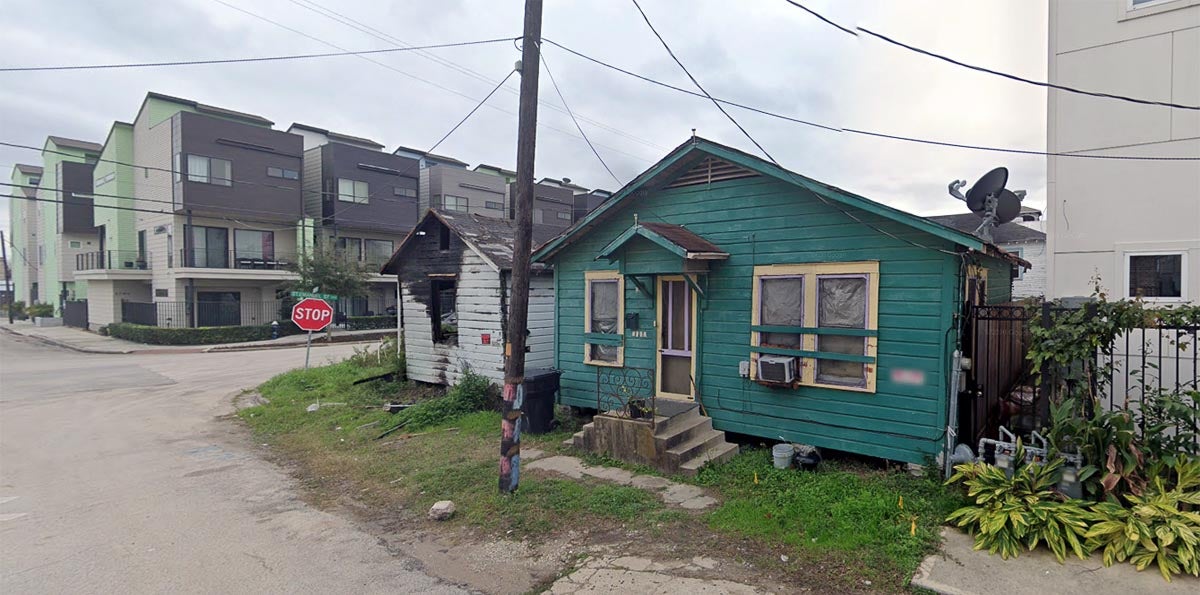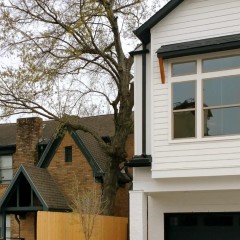Rapid urbanization is transforming the Houston area both with more far-flung development and dense housing in close-in communities. While redevelopment can mean improved housing conditions, increased supply and stable home prices, it can also acutely affect under-resourced communities with older homes and long-term residents who have low or fixed incomes. At the Kinder Institute for Urban Research, we studied the connections between changes in the housing stock and the risk of gentrification in seven case-study neighborhoods — Fifth Ward, Independence Heights, Lazybrook/Timbergrove, Montrose, Spring-Southwest, Sunnyside and Third Ward. We have published the findings in a new report titled “Re-Taking Stock: Understanding the Connections between Housing Trends and Gentrification in Harris County.”
This is the third and final report in our current series on gentrification — the first report established a gentrification typology in Harris County (and was used to determine the gentrification stage for the census tracts in this study), while the second took a closer look at the connection between transit-adjacent development and gentrification.
Through this study, we’ve captured changes in the housing stock geographically and over time, and analyzed these changes in comparison a neighborhood’s evolving demographic composition and its gentrification vulnerabilities.
Changes in the housing stock are one of the most common ways communities collectively discern if gentrification is occurring in their neighborhood. Oftentimes, those anecdotal observations manifest themselves in the late stages of the gentrification process, and, as we found in this report, demolition activity plays a prominent role in bringing changes to the demographic composition in gentrifying areas.

Key Findings:
► Affluent areas that have gentrified or have faced no risk of gentrification saw more construction (and demolitions) than gentrifying areas, likely steering higher-income housing growth away from gentrifying neighborhoods.
Townhomes and large multi-family dwelling units were the predominant housing types built in already gentrified and invulnerable neighborhoods. These affluent census tracts predominantly are located west of Downtown and have experienced high volumes of construction and demolition. Houston’s experience is an example for cities throughout the nation struggling to direct redevelopment pressure away from vulnerable neighborhoods — often with land use, zoning and entrenched NIMBYism acting as barriers to the development of more housing in high-demand neighborhoods. These environments ultimately intensify gentrification pressure in vulnerable neighborhoods populated by people of color and those with lower economic means.
► Townhomes are a popular form of construction, especially in high-demand neighborhoods with proximity to job centers and quality-of-life amenities. However, the expansion of this housing type into gentrifying areas appears to be speeding sociodemographic shifts and threatening housing affordability in at-risk communities.
Townhomes are much more visible in already gentrified neighborhoods (Montrose and Lazybrook/Timbergrove) than they are in gentrifying neighborhoods (Fifth Ward, Independence Heights, Sunnyside and Third Ward). This housing type is attracting higher-income households and young families to already-gentrified neighborhoods. They are also becoming a much more common housing product in gentrifying neighborhoods, particularly Fifth Ward, Independence Heights and Third Ward (Sunnyside is the only exception), attracting higher-income households of young adults to neighborhoods with lower-income people of color, which poses a threat to the housing stability of the latter.
► Gentrifying neighborhoods face an elevated risk of quick turnover due to demolition patterns and townhome development near the boundaries of high-demand neighborhoods.
Gentrifying or at-risk neighborhoods (Fifth Ward, Independence Heights and Third Ward) had levels of demolition comparable to already-gentrified areas, but saw less new construction, a sign that housing is slowly transitioning. Intensive demolition patterns combined with the proportion of townhomes in newly built units (which attract higher-income households) foreshadow continued sociodemographic shifts that could lead to more drastic housing stock changes in the future, and contribute to the displacement of long-term residents on fixed incomes. These neighborhoods also illustrate how gentrification is much more than what is being built or who is moving in, it is also about what is being torn down and where.
► Spring-Southwest, an inner-suburban community, is absorbing the suburbanization of working-class people of color into a mix of older and newer housing adjacent to environmental hazards. This complicates how we typically understand gentrification, that is, investors injecting capital into poorer neighborhoods in order to provide housing for wealthier residents (at the expense of displaced older residents).
The Spring-Southwest area has a mix of aging multi-family housing stock, as well as newly built large, multi-family units and affordable single-family homes. This mix of housing types increases the affordable housing options for county residents earning 80–100% of the area’s median income, but is located near areas at high risk of being flooded by the Greens Bayou Watershed. The trends here suggest that investment patterns ‑ and not necessarily housing type — are a more prominent link between gentrification and displacement.
► Housing development in Houston’s urban core (i.e. Inner Loop) is a remarkable case of urban infill for a major American city, surpassing the total annual housing production of other major cities.
Housing production in the urban core of American cities has been a growing challenge because of restrictive land-use policies. Housing production inside Houston’s Loop 610, which accounts for only about 15% of the city’s total land area, surpasses the entire housing production of Atlanta, San Diego and San Francisco/Oakland, and almost exceeds that of Seattle.
Redevelopment trends in Houston validate the argument that relaxed land-use regulations (i.e. lack of use-based zoning and reduced requirements for minimum lot size) can lead to the development of more housing units near major job centers, services and transportation choices. Conversely, there are land-use tools in Houston that neighborhoods can tap into, including restrictive covenants and minimum-lot-size restrictions that can prohibit dense housing production; however, more data is needed to understand the effects of these tools in shaping local housing dynamics.


